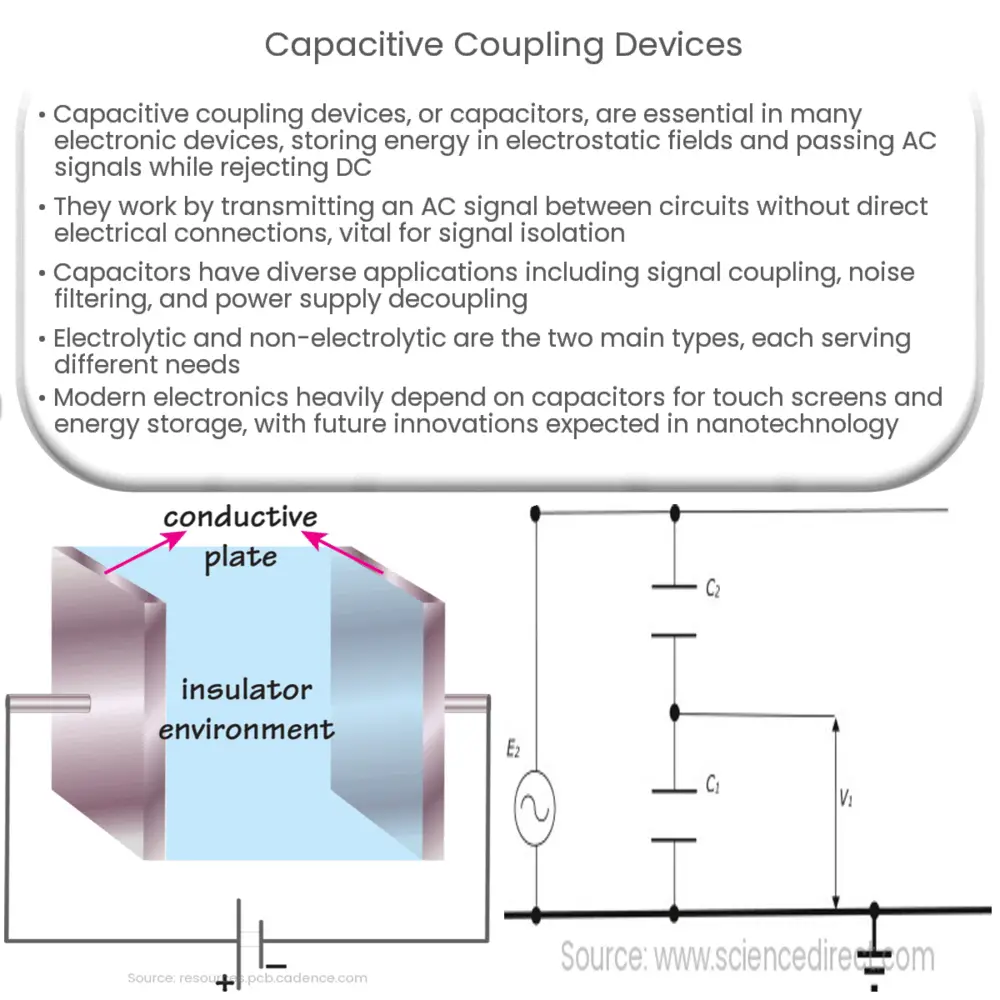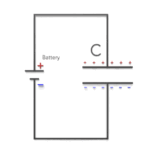Explore the world of capacitive coupling devices, their working mechanism, applications in modern electronics, and future trends.

Understanding Capacitive Coupling Devices
Capacitive coupling devices, often referred to as ‘capacitors’, are fundamental components used in a wide variety of electronic devices and circuits. These devices store energy in an electrostatic field and are known for their ability to pass alternating current (AC) signals from one part of a circuit to another, while rejecting direct current (DC).
Capacitive Coupling Principle
The principle of capacitive coupling revolves around the fact that an alternating current signal can be passed between circuits by a capacitor. Here’s how it works: When an AC signal enters one side of the capacitor, it causes a change in the electric charge stored within. This change in charge, in turn, causes a similar change on the other side of the capacitor. As a result, the AC signal is transmitted through the capacitor, effectively linking two circuits without a direct electrical connection. This is a crucial functionality in many electronic circuits and devices where signal isolation is necessary for safety or performance.
Applications of Capacitive Coupling
- Signal Coupling: This is the most common use of capacitive coupling, used extensively in audio and radio frequency circuits to pass a signal from one stage to another while blocking DC.
- Noise Filtering: Capacitors can also serve as effective noise filters, by shorting out unwanted high frequency noise.
- Power Supply Decoupling: Capacitive coupling is often used in power supplies to prevent unwanted oscillations and noise from reaching other parts of the circuit.
Types of Capacitive Coupling Devices
Capacitive coupling devices can be broadly classified into two types based on their structure and material used: Electrolytic Capacitors and Non-Electrolytic Capacitors.
- Electrolytic Capacitors: They are used where high capacitance values are required. Their capacitance-to-volume ratio is higher compared to non-electrolytic capacitors. Commonly used in power supply circuits, they have polarities and hence, must be connected in the right orientation.
- Non-Electrolytic Capacitors: These capacitors are used for lower capacitance requirements. They are typically non-polar and can be installed in any orientation. They are commonly found in signal coupling, oscillation circuits, and timing applications.
The Working Mechanism of Capacitors
Both types of capacitors work based on the same principle, although there are some differences due to the nature of the dielectric used. When a potential difference (voltage) is applied across the leads of the capacitor, an electric field develops across the dielectric, causing a positive charge to collect on one plate and a negative charge on the other. This accumulation of charge is what allows the capacitor to store energy. The amount of energy a capacitor can store is defined by its capacitance, which is measured in Farads (F).
Role in Modern Electronics
Modern electronics rely heavily on capacitive coupling. Capacitive touch screens, one of the most widespread applications of capacitive coupling, work by detecting changes in capacitance as a user’s finger nears the screen. This technology has revolutionized the way we interact with devices, making touch-sensitive devices an integral part of our daily lives.
Capacitors also play a crucial role in power management and energy storage systems. For example, supercapacitors, also known as ultracapacitors, can store and release a significant amount of energy very quickly, making them an important part of the future of renewable energy storage.
Challenges and Future Trends
While capacitive coupling devices have transformed the electronics industry, they also present certain challenges. The capacitance value of a capacitor can be influenced by external conditions such as temperature and frequency, potentially leading to undesired changes in circuit behavior. However, ongoing research and development efforts continue to improve the stability and performance of capacitive coupling devices.
Looking towards the future, the field of nanotechnology promises exciting developments in capacitive coupling devices. New materials and manufacturing techniques could lead to capacitors with far higher energy density, efficiency, and stability than is currently possible.
Conclusion
In conclusion, capacitive coupling devices are a cornerstone of modern electronics, serving vital roles in a multitude of applications. From signal transmission and noise filtering to energy storage and touch screen technology, capacitors embody the transformative power of electronic engineering. Despite their challenges, capacitive coupling devices will continue to be a key focus of technological innovation as we advance towards a more digital and energy-conscious future.



